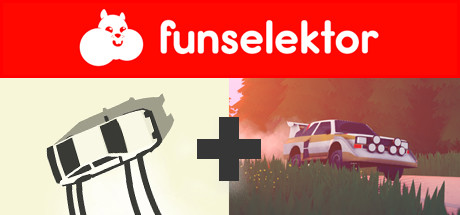Funselektor Bundle For Mac
Mac OS X applications are typically packaged as application bundles which are then distributed in .dmg (disk image) files. This tutorial will show you how to package your XULRunner-based application in a way which is consistent with the expectations of Mac OS X users.
Application bundle layout
The bundle must be purchased through the Apple Store for Education. After purchasing the bundle, education customers will receive an email with codes to redeem the apps on the Mac App Store. Mac OS X applications are typically packaged as application bundles which are then distributed in.dmg (disk image) files. This tutorial will show you how to package your XULRunner-based application in a way which is consistent with the expectations of Mac OS X users. Application bundle layout. Application bundles are essentially just directory structures that conform to a standard layout. About this bundle Remember the 5 D's of Drifting: Drift, drive, dope, doughnut and drift. Fans of sliding sideways can go no further than the Funselektor bundle, pairing Absolute Drift with art of rally for the ultimate minimal drifting duo. Thank you Nuck Chorris! Polygon is a gaming website in partnership with Vox Media. Our culture focused site covers games, their creators, the fans, trending stories and entertainment news. Our mission: Finding the best Mac App Bundles and helping you saving hundreds of dollars! There are numerous places and websites where app bundles are offered. We try to simplify your time-consuming efforts to find the latest Mac bundle by providing a one stop site where you are always up to date about the best offers.
Application bundles are essentially just directory structures that conform to a standard layout and naming convention. A XUL application for Mac OS X should follow something similar to this basic directory structure:
Example.app/Contents/Info.plist(Application bundle properties are specified in this XML file.)PkgInfo(This is a simple text file and is created along with the Info.plist file)MacOS/(The MacOS folder will contain your XULRunner executable)xulrunner(This is the xulrunner stub)
Resources/(This is where you place your XUL Application code and support files)application.ini(XULRunner-related application settings)example.icns(This is the icon which will be used by your application bundle)chrome/content/example.xul(This directory contains your application's chrome)
defaults/preferences/app-prefs.js(This provides some default values for preferences)
Application bundle contents
In addition to the standard directory hierarchy that's required of all Mac OS X applications, as shown above in Application bundle layout, there are some specific rules for what content goes where:
- The top-level directory is given a name that ends with
.appwhich designates the whole package as an application bundle. - The first sub-directory is called
Contentsand within that directory you will place several files and folders that are needed by your application bundle. Info.plistandPkgInfomust exist in the Contents directory. The content of these files is covered in the article Deploying XULRunner 1.8.
Examples
Funselektor Bundle For Mac Os
These example files are taken from a port of WebRunner which was created to illustrate one method of Mac OS X application packaging.
See also
